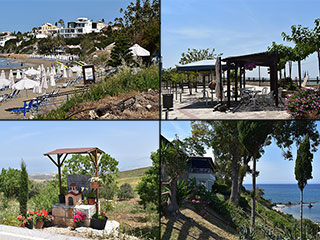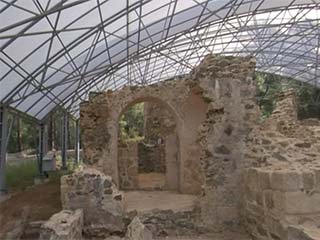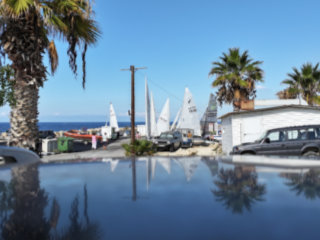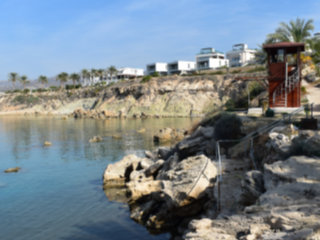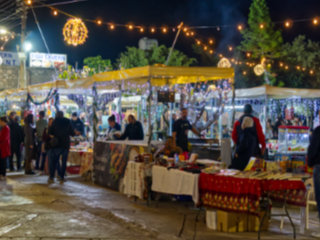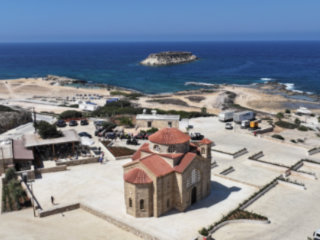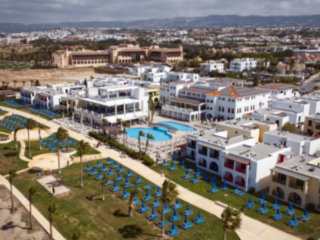Gialia Monastery
In the northern reaches of Paphos forest lies an ancient monastery built over 1000 years ago. In ruins for over 400 years, Gialia Monastery was rediscovered in 1981, and excavated about a decade ago. It now provides an interesting and unique destination for the curious traveller...
Protected
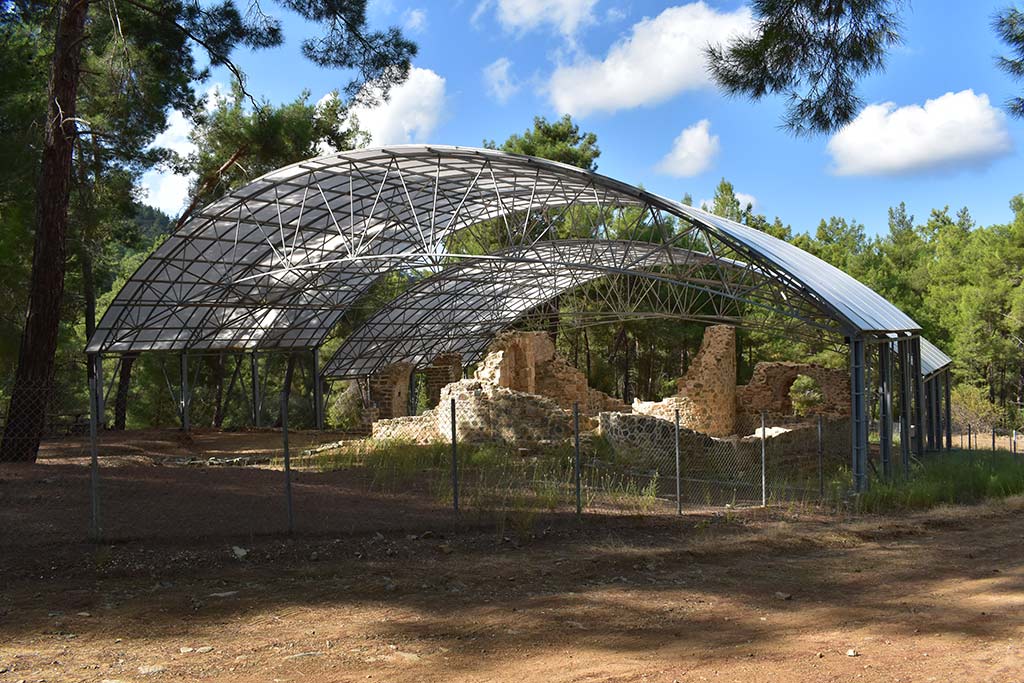
To get to the monastery you have to take the coast road from Polis, drive to Gialia, and follow the signs. We include a map at the end of the blog, just to show the exact route, but it isn't that complicated. The route itself is very beautiful, and will form part of a later road trip, once I have worked out the full itinery.
Once you get to the monastery, the first thing you will notice is that they have protected it by adding this roof. This also means that it is nicely shaded should you visit during the summer heat. Or November heat, for that matter...
We Want Information
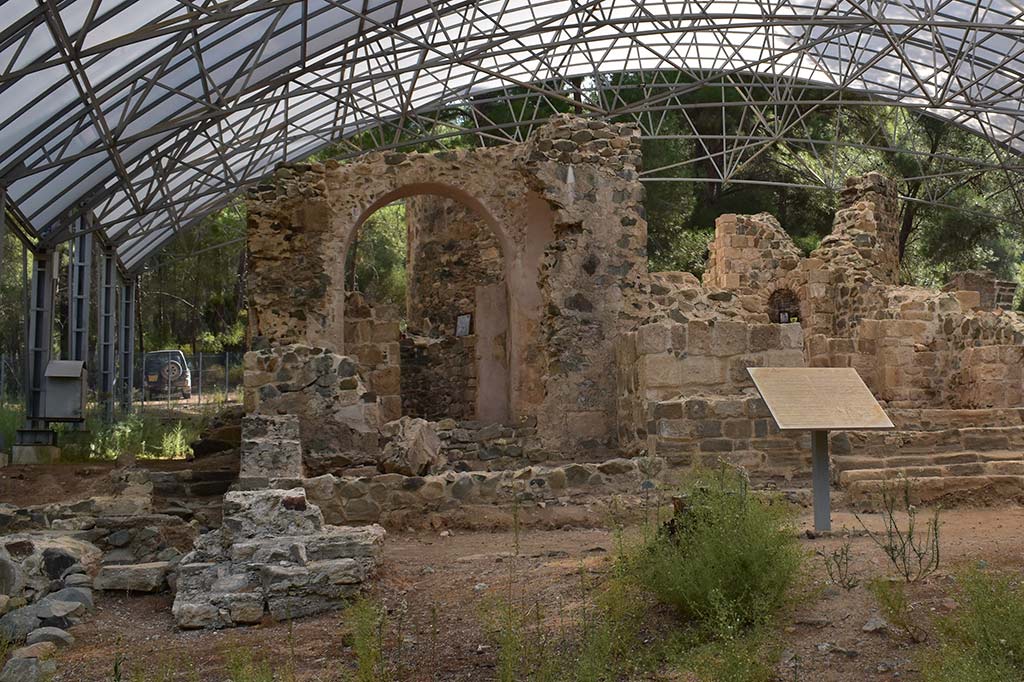
There is a notice board at the front (or should that be back?) of the monastery. I shall reproduce what it says here, over the next few posts. If the text is italic, it came from the notice board.
The Gialia Holy Mother Georgian Monastery, was founded between 970 and 979 by David Kuropalates, King of Tao Kiarjeti, in what was then southwest Georgia - today an area of northwest Turkey. The Georgian kings, David Agmashenebeli (1089 - 1125) and Tamar (1184 - 1210) took special care of the gialia Monastery, which also became a significant centre fro Georgian culture in Cyprus when it was founded. A strong educational centre was at the heart of the monastery, where books were transcribed and translated, and are found today in book collections all over the world. According to written sources, the Gialia Monastery was one of the richest Cypriot monasteries, with an annual income of 300 ducats.
So this is old.
Mural Remnants
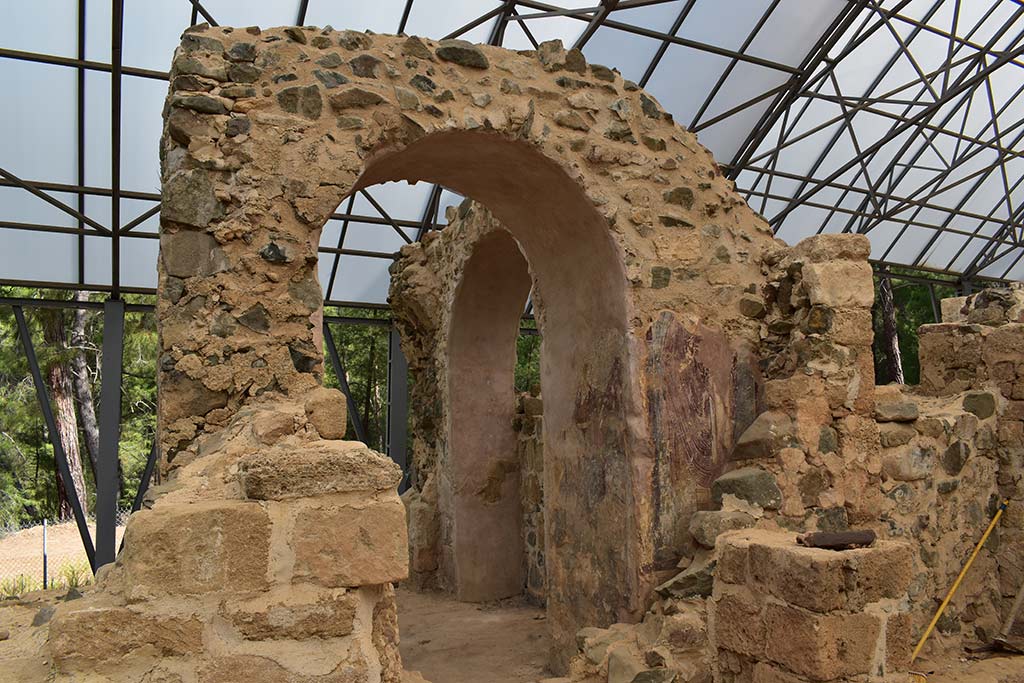
We shall tackle the monastery from left to right. This archway leads to the first passage. You can see signs of ancient artwork.
It should be pointed out right from the outset that this is a reconstruction, built from the rubble that was originally found here. If you think that is cheating, look at the history of Stone Henge.
The ruins of the Gialia monastery had been overgrown with earth and weeds until 1981, when it was identified by a famous US-based Georgian scholar, Vakhtang Jabadze. In 2006 -2010 an archaeological expedition organized by the Ministry of Culture and Monument Protection of Georgia excavated and studied the Gialia Monastery Complex, the St Nicholas Church with the graveard for monks, the cell of a hermit monk and the monastery's mill. The main temple of the monastery is a tri-conch domed church, the only of its kind in Cyprus, but there are many such churches in Georgia and especially in Tao-Klarjeti.
Modern Shrine
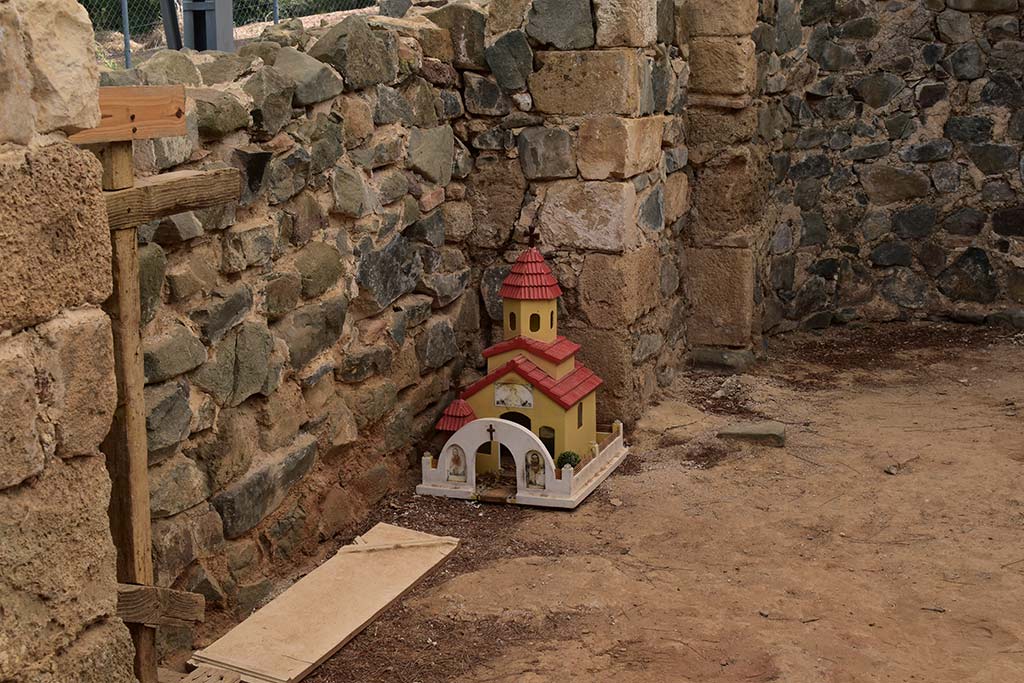
Apparently all the walls were covered with paint at one point. It must have been quite a sight.
As you would expect, the ruins have also become adorned with more modern votive offerings, and this rather natty shrine. I am not sure what the wooden construction is next to it.
The church interior is entirely painted, with scenes of the Baptism of Christ in the south apse and the Descent from the Cross in the north apse. There are semi-figures of holy fathers at the altar; fragments of painted iconostases were found in the ruins of the church. The main layer of the monastery wasll painting is an example of the highly creative painting style of the pre-Renaissance Komnenian Epoch (12th century).
The Main Entrance
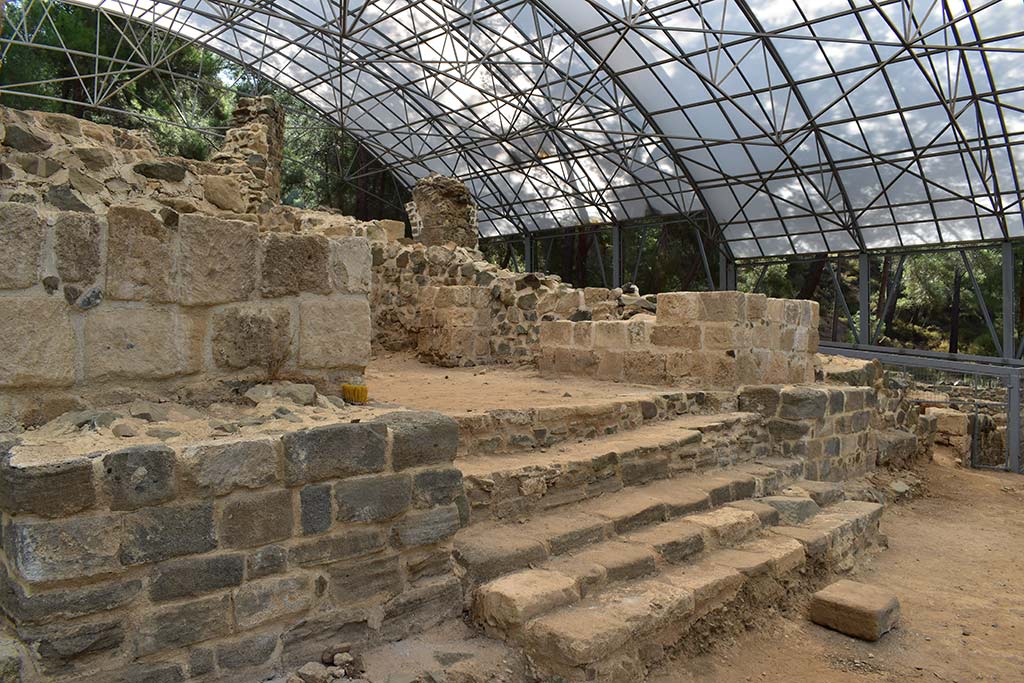
That was the extent of the first section of the monastery, so I retraced my steps and started up the central corridor.
The St George hall chapel was built in the 11th century, to the north of Gialia Holy Mother Church. A fresco inscription with an appeal to St George was identified inside the chapel, and there is a fresco of the warrior St George at the chapel door. A two-storey bell tower with a gate on the lower floor was built soon afterwards west of the St George chapel.
Page 1 of 5

Related Blogs:
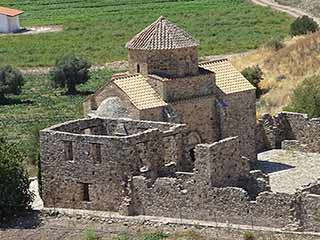
Sinti Monastery
It's time for another guest blog, and this time Max has taken a break from his minerals to show us somewhere a bit more spiritual. Over to you Max... Sinti Monastery is a very important ancient monument and not far away from Paphos, in the beautiful Xeros River Valley. I thought I would take a round trip. In order that people can visit the place all year round (even after a good Winter's rain) in a normal car I took the longer route over the hills where the roads nowadays are all properly surfaced. On the way back you can either take the same road (Winter) or use the short cut along the Xeros river bed which is only 8 km until the next village Nata.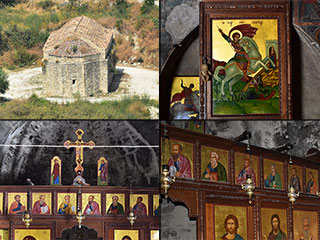
Ayios Georgios Koumanon Monastery
The Paphos Countryside is full of surprises. On any journey, you can guarantee that you will pass many interesting places without realising it. However, sometimes, if you go in search of a known location, it can prove elusive. Join us as we stalk this elusive old church through the Diarizos Valley countryside, before finally succumbing to its mysterious charms...Good Pages To Visit
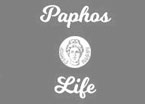
FB PagePaphos Life on Facebook
Like us on Facebook and stay notified of new blog posts.

FB PageOur Facebook Chat Group
Paphos Chat has been created for people who like our site and want to chat using Facebook. You can also easily upload photos of any size here. A lot of people are members of the Facebook chat group and the main forum. It's entirely up to you.

ListBlog Locations
Planning a day out? Then use our map of blog locations as a handy guide. Some of the places we visit our closer to each other than you might think, so take a look and start planning your next adventure...
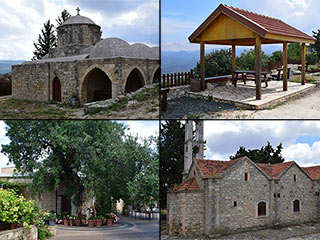
eBookCyprus Road Trip 01: the Kathikas - Panagia Loop
Let me take you on a journey around the region of Paphos, Cyprus. Starting at Paphos itself, we travel to Akoursos, then Kathikas, Kritou Terra and Simou. We continue past Lasa and Kannaviou, before taking in the delights of Panagia. Getting a bit more adventurous, we visit the abandoned villages of Statos and Agios Fotios, before passing through Choulou, Letymbou and Polemi, and rejoining the main Paphos - Polis road.
The route is suitable for all types of vehicle, and requires no off-roading. The guide contains about 130 photographs including shots of all the road signs you need to pay attention to, as well as some of the highlights you may experience along the way.
There are also several maps which will help you keep your bearings.
You can do this journey in a day, or you can break it up into chunks. You can also do it in reverse, to get some completely different views. It is entirely up to you.
